Send us a Message
- Destinations
- Tours
- By Destinations
- By Themes
- Suggested Combination
- Duration
- About Us
- Reviews
Pho (Vietnamese Noodle Soup)
Phở, a noodle soup, is by far the most popular dish throughout Vietnam. Originally from Northern Vietnam, the dish became popular throughout the country during the Vietnam War, when refugees from the north migrated to the south, bringing the noodle soup with them. While a bowl of pho will always contain the basic ingredients of rice noodles, hot broth, herbs, and either chicken or beef, there are varying regional differences from Northern to Southern Vietnam, with southern pho being much sweeter than its northern counterpart. While pho can be eaten at any time of the day in the North, it is primarily a breakfast meal in the South.
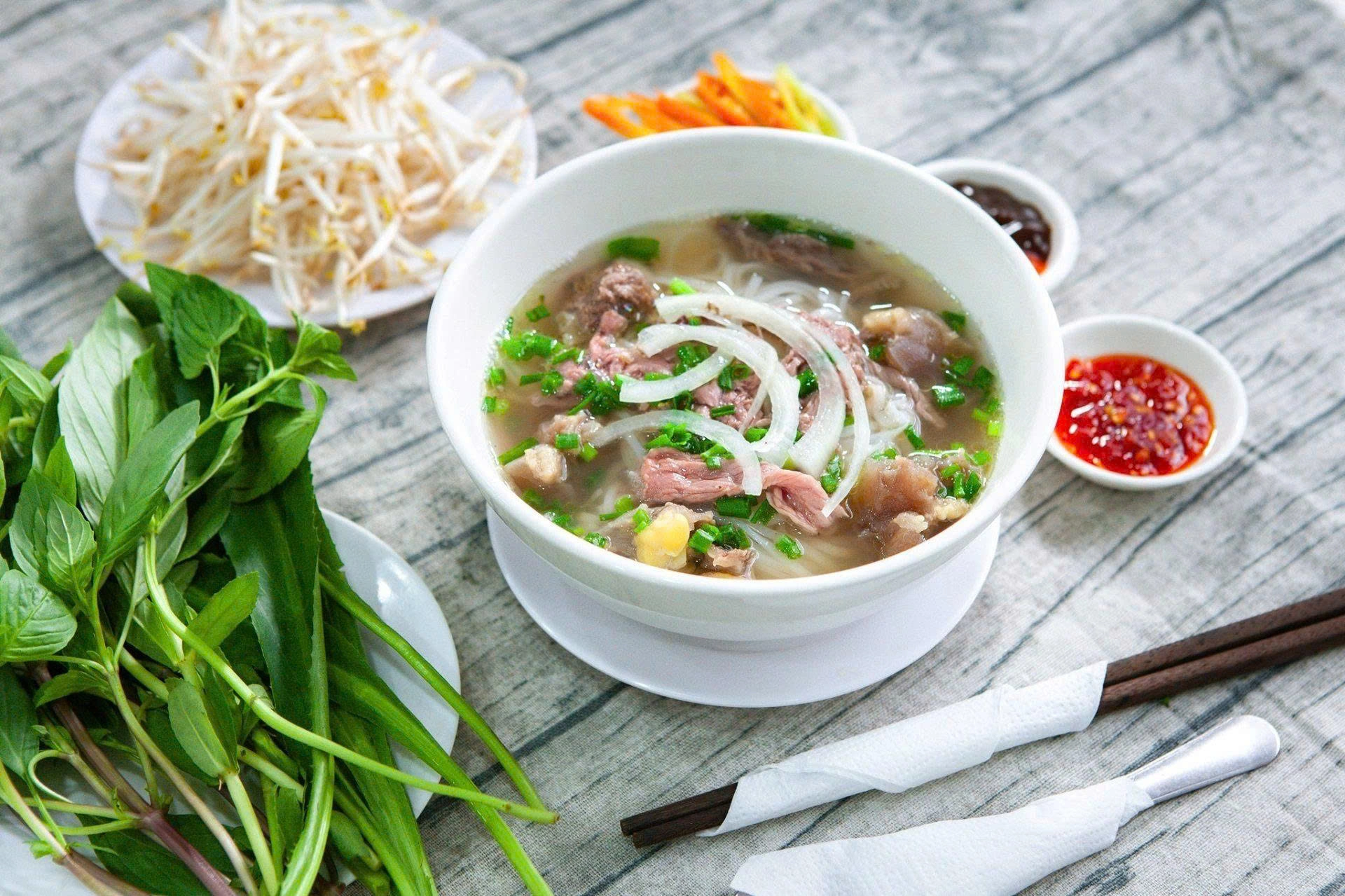
Banh mi (Vietnamese Baguette Sandwich)
Bánh mì is a culinary symbol of Vietnam’s fusion of cultures, combining a French-style baguette with Vietnamese fillings. The bread is light, airy, and crisp, usually filled with savory layers of grilled pork, pâté, pickled vegetables, cucumber, fresh herbs, and chili sauce. Every bite offers a delightful contrast of crunchy, salty, sweet, and tangy flavors. From street-side vendors to gourmet shops, bánh mì is available everywhere and always satisfying. It’s the perfect grab-and-go meal, quick, affordable, and full of personality.
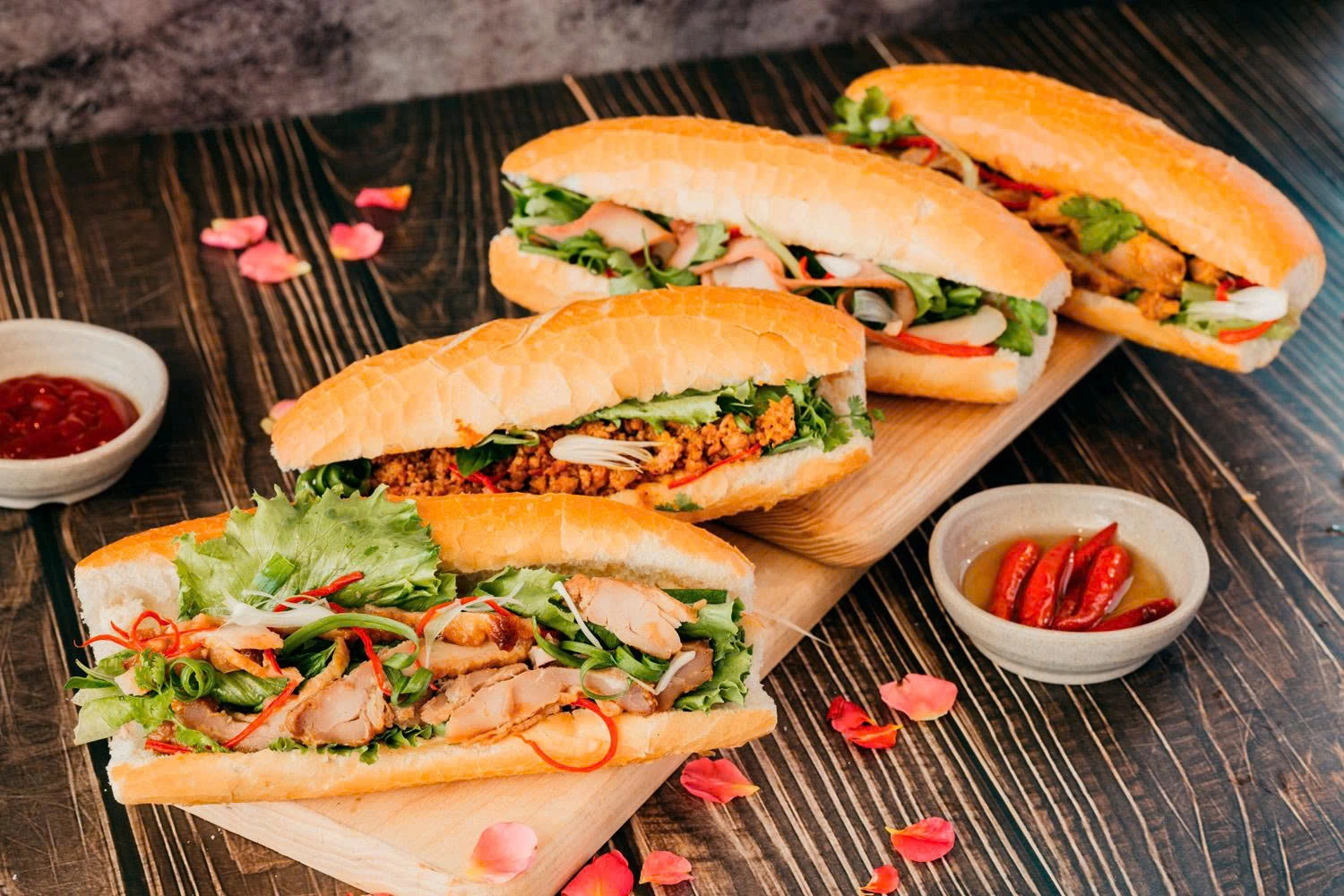
Bun cha (Grilled Pork with Vermicelli)
Bún chả is another dish originating from Northern Vietnam, in Hanoi. Bun Cha is another rice noodle dish that is served with a basket of green herbs and grilled fatty pork in two textures, sausage patties and bacon strips. There is also a dipping sauce made from cucumbers, carrots, vinegar, and fish sauce, with an occasional variation of adding garlic and chili in the mixture. The smoky flavor of the pork makes this dish very popular among locals and foreigners alike, and can be eaten for breakfast or lunch.
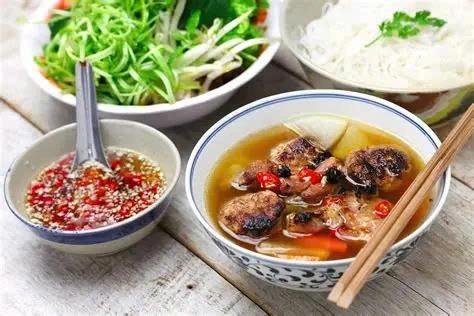
Goi cuon (Fresh Spring Rolls)
Often called summer rolls, gỏi cuốn are fresh, healthy, and beautifully presented. These delicate rice paper rolls are typically filled with shrimp, pork, vermicelli noodles, lettuce, and fragrant herbs, then served with a rich peanut dipping sauce. Unlike fried rolls, gỏi cuốn is light, refreshing, and perfect for warm weather. The dish reflects the Vietnamese philosophy of balancing flavors and textures in every bite. Easy to eat and customizable, it’s a great introduction to Vietnam’s love of herbs and fresh ingredients.
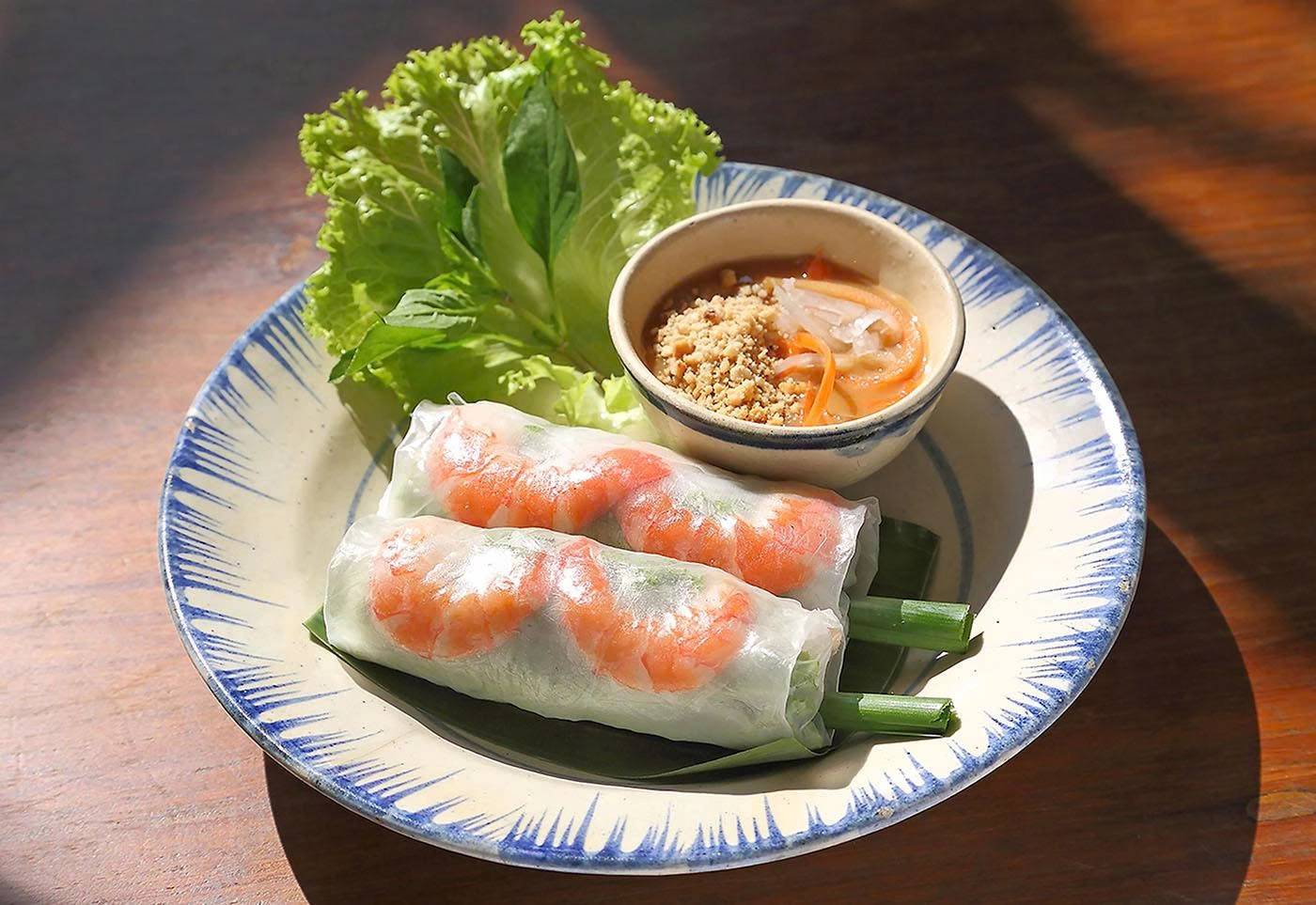
Banh xeo (Crispy Vietnamese Pancake)
Bánh xèo, meaning “sizzling cake,” is named after the sound it makes when rice batter hits a hot pan. The thin, crispy pancake is filled with shrimp, pork, bean sprouts, and sometimes mushrooms, then folded and eaten with fresh greens. Diners wrap pieces of bánh xèo in lettuce with herbs and dip them into fish sauce, creating a burst of textures and flavors. Each region has its own style—larger and thinner in the south, smaller and thicker in central Vietnam. It’s a fun, interactive dish that captures the essence of Vietnamese dining.
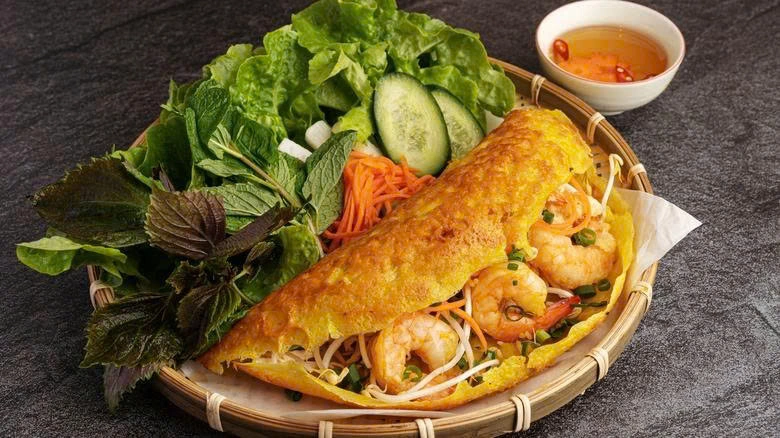
Bun Bo Hue
Bún bò Huế is a popular Vietnamese soup from central Vietnam, often compared to the iconic pho. The soup originated in Hue, the former capital of Vietnam, and is greatly admired for its balance and usage of spicy, sour, salty, and sweet flavors. Bun bo Hue uses rice vermicelli noodles (like in bun cha), thinly-sliced marinated beef, chunks of ox tail and pig knuckles, and sometimes, congealed pig blood. It is commonly served with a basket of herbs, with fish and shrimp sauce added for taste.
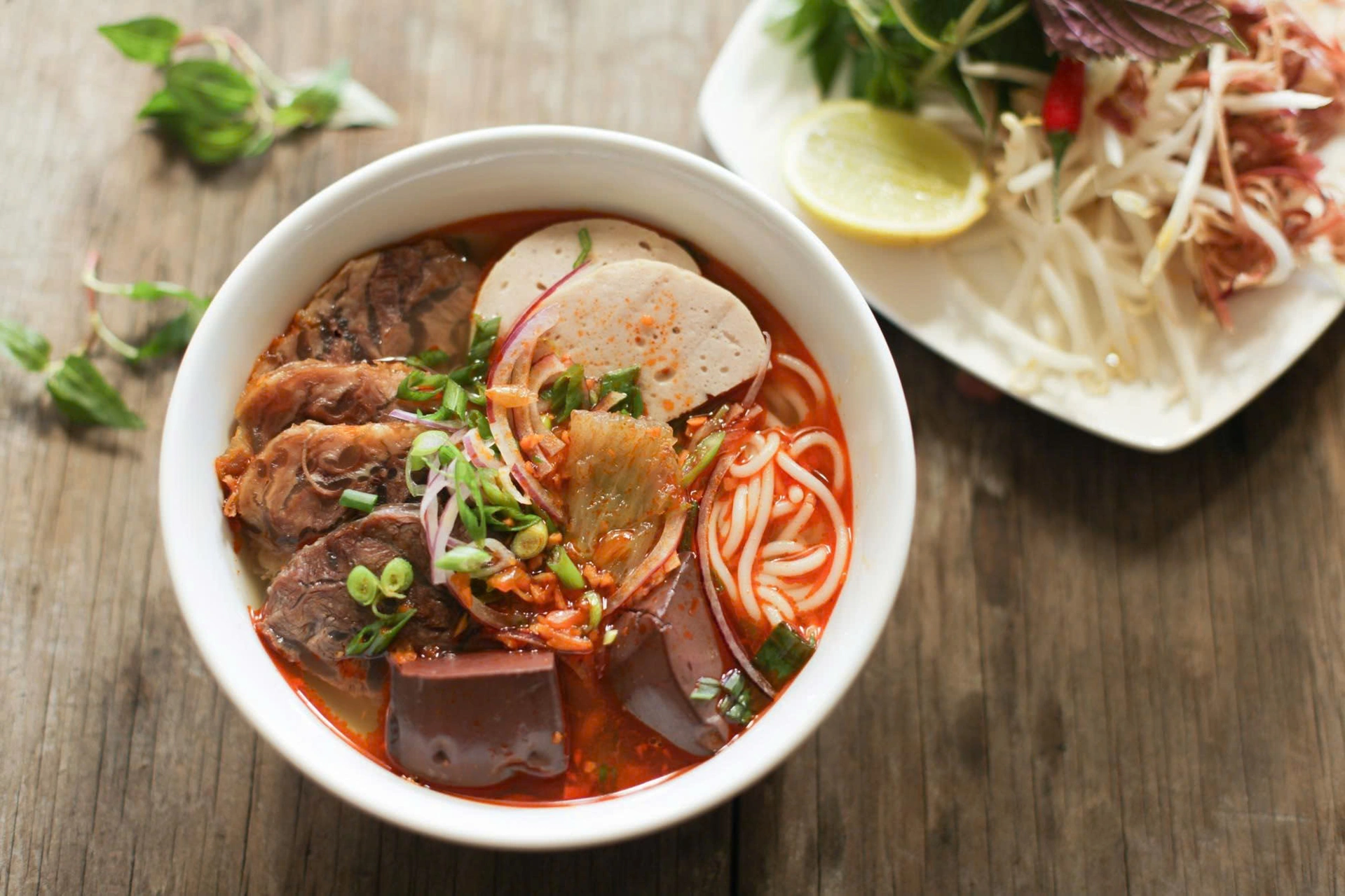
Mi Quang (Quang-style Noodles)
Mi Quang is a specialty of Quang Nam province, particularly Da Nang, known for its golden turmeric-tinted noodles. The dish is topped with shrimp, pork, quail eggs, and roasted peanuts, then garnished with fresh herbs and sesame rice crackers. Unlike other noodle soups, mi Quang is served with just a small amount of rich broth, making it hearty yet light. Its colorful presentation makes it visually stunning and flavorful at the same time. Eating mi Quang in its homeland is a delicious way to connect with central Vietnam’s culinary heritage.
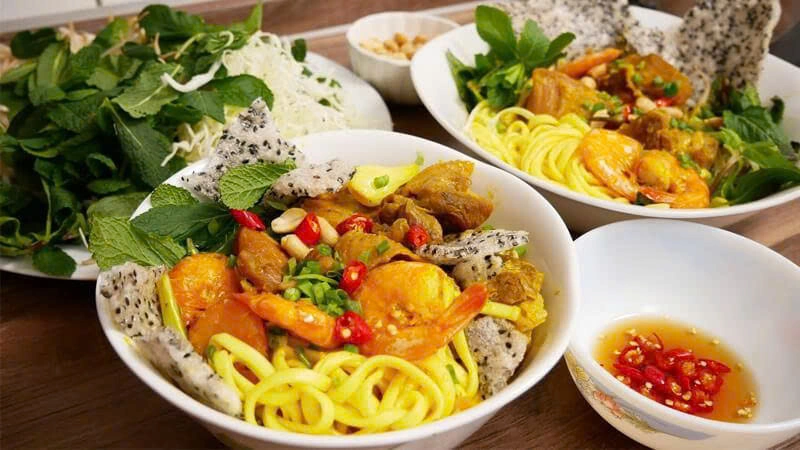
Banh cuon (Steamed Rice Rolls)
Bánh cuốn is a delicate dish often enjoyed for breakfast in northern Vietnam. Thin sheets of steamed rice batter are filled with minced pork and wood-ear mushrooms, then topped with fried shallots. Served with a side of herbs, sliced cucumber, and a light dipping sauce, it’s simple yet deeply satisfying. Its silky, melt-in-the-mouth texture makes it unique among Vietnamese dishes. Watching skilled street vendors roll and steam bánh cuốn adds to the experience, turning a meal into a performance.
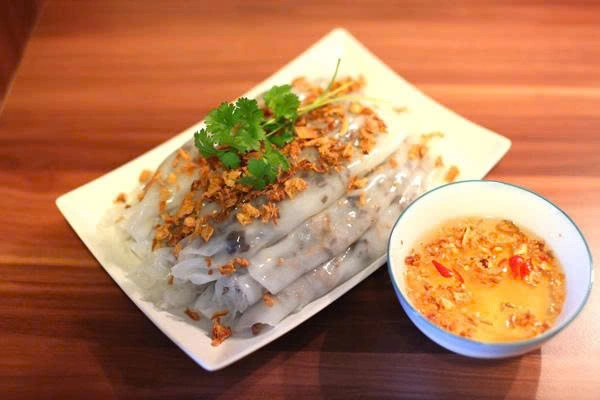
Cha gio (Fried Spring Rolls)
Chả giò, also known as nem rán in the north, are crispy fried spring rolls beloved across Vietnam. They’re made by wrapping minced pork, shrimp, mushrooms, and vegetables in rice paper, then deep-frying until golden and crunchy. The rolls are served with lettuce, herbs, and a dipping sauce for balance. Despite being rich, the fresh greens keep the dish light and flavorful. Whether eaten as a snack, appetizer, or part of a larger meal, chả giò is a true crowd-pleaser.
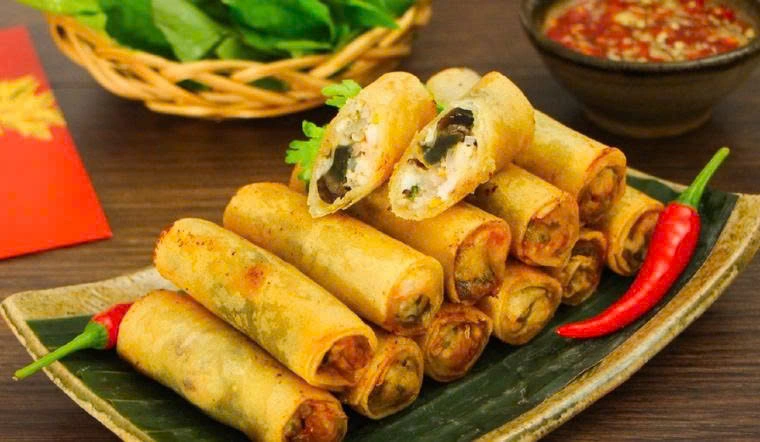
Che (Vietnamese Sweet Dessert Soup)
Chè is Vietnam’s answer to a sweet ending, offering countless variations of dessert soups, drinks, and puddings. Common ingredients include beans, coconut milk, fruits, jellies, and tapioca, layered into colorful bowls or glasses. Served hot or iced, chè ranges from refreshing to comforting, depending on the season.
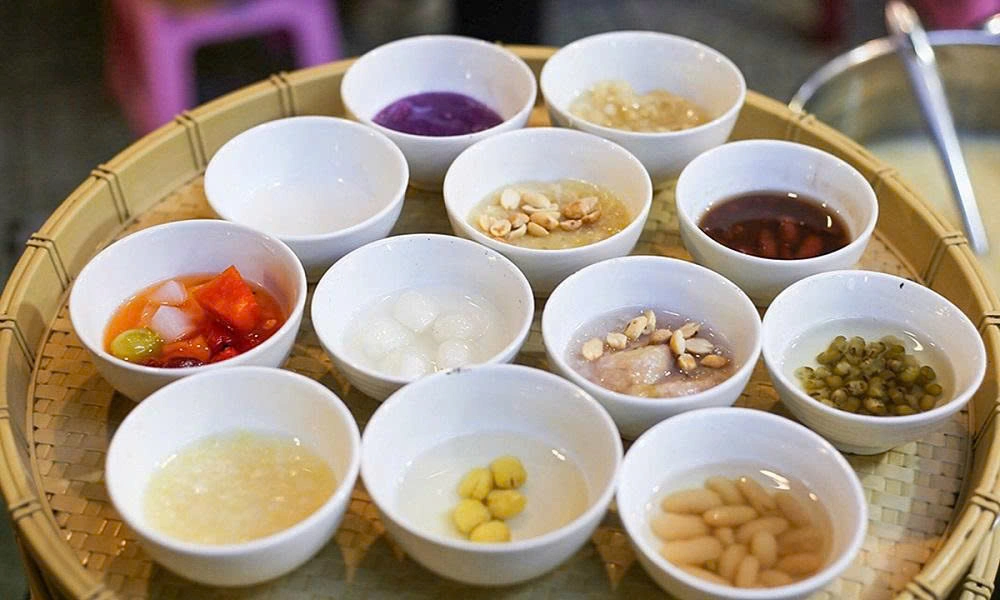
Street stalls often display large glass jars filled with vibrant ingredients, inviting you to mix and match. More than just a dessert, chè is a fun, playful reflection of Vietnam’s creativity with food.
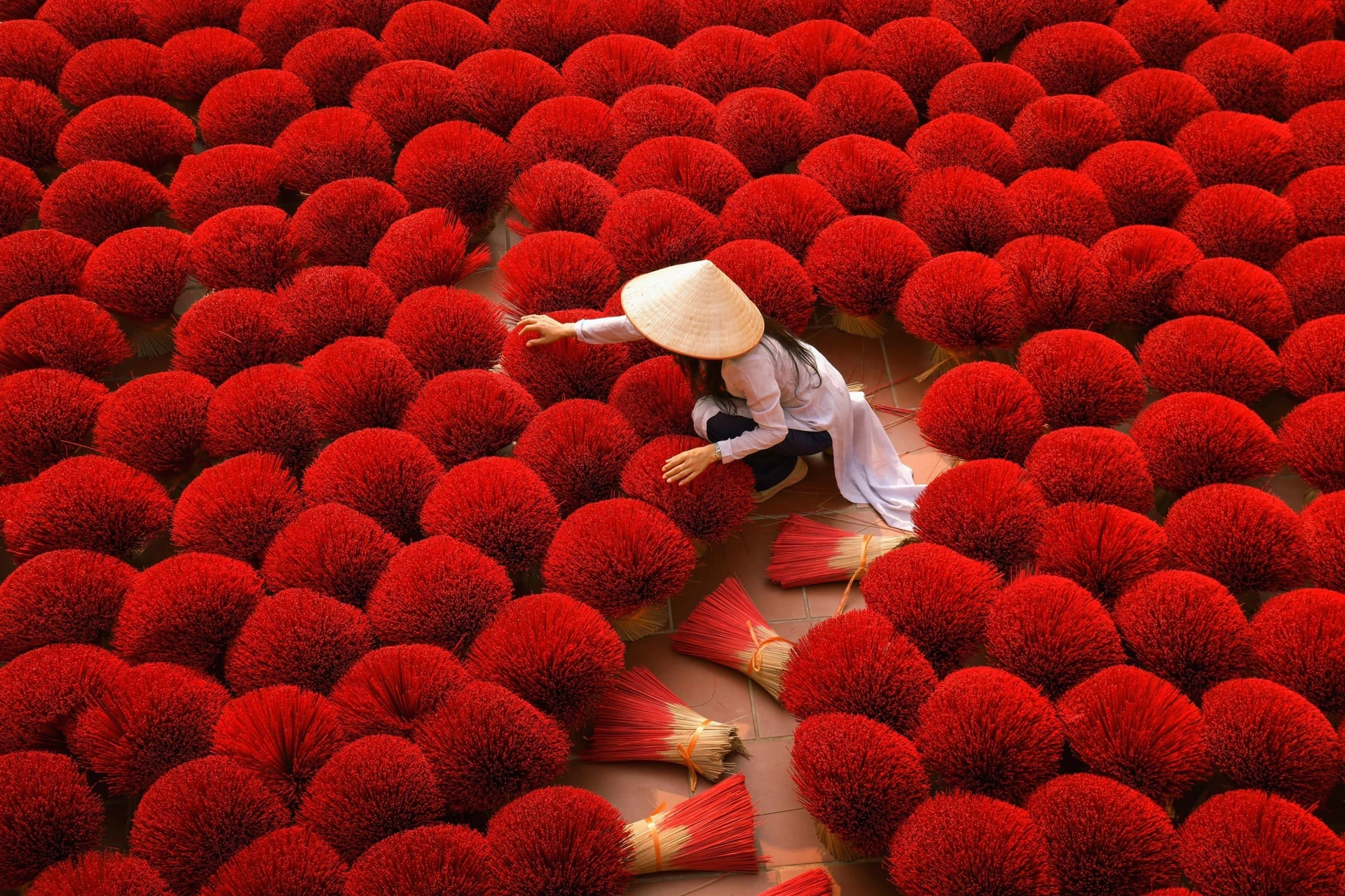
Vietnam is a country full of history, culture, and natural beauty, offering unforgettable experiences for every type of traveler. From bustling cities and ancient temples to serene countryside and pristine beaches, there is something for everyone. With careful planning, attention to local customs, and consideration for dietary or religious needs, Israeli travelers can enjoy a safe, enriching, and memorable journey.
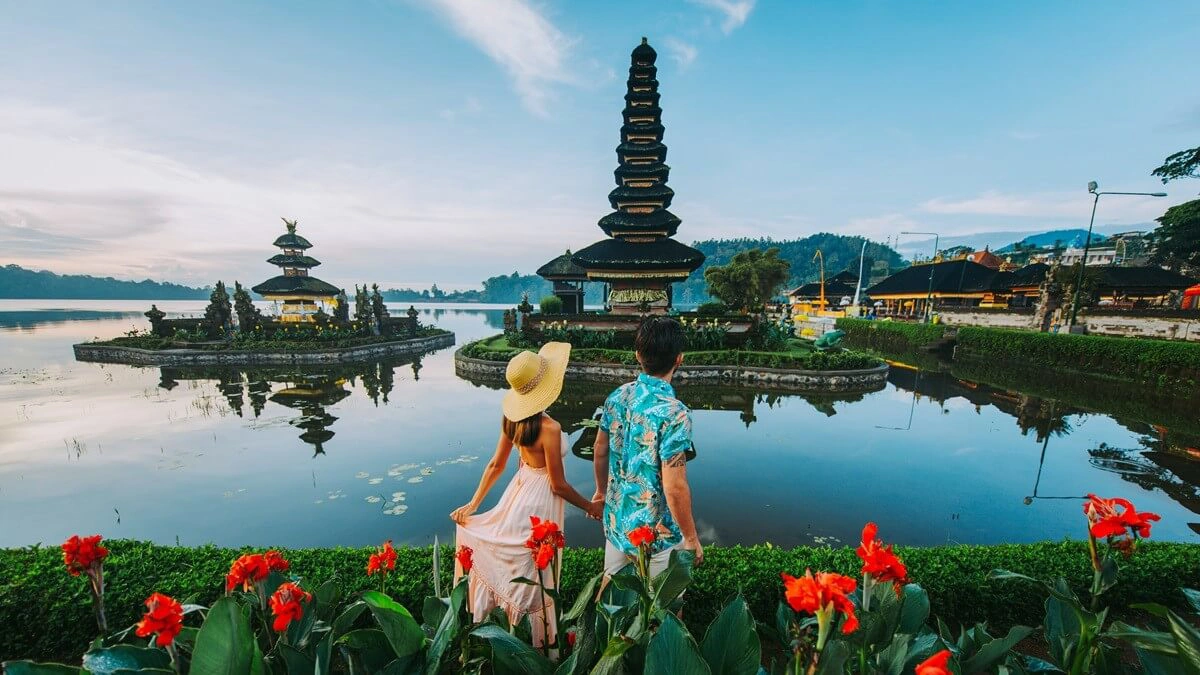
To enter Bali, travelers need a passport valid for 6 months; many nationalities get 30 days visa-free, while longer stays require a Visa on Arrival or e-visa. The island has a tropical climate with a dry season (Apr–Oct) ideal for beaches and festivals, and a wet season (Nov–Mar) with lush green landscapes. Cash in Indonesian Rupiah is essential for small expenses, though cards are accepted in larger venues, and transport mainly relies on taxis, ride-hailing apps, scooters, or private drivers. Visitors should respect local customs—dress modestly at temples, remove shoes in sacred spaces, and use the right hand when giving or receiving items.
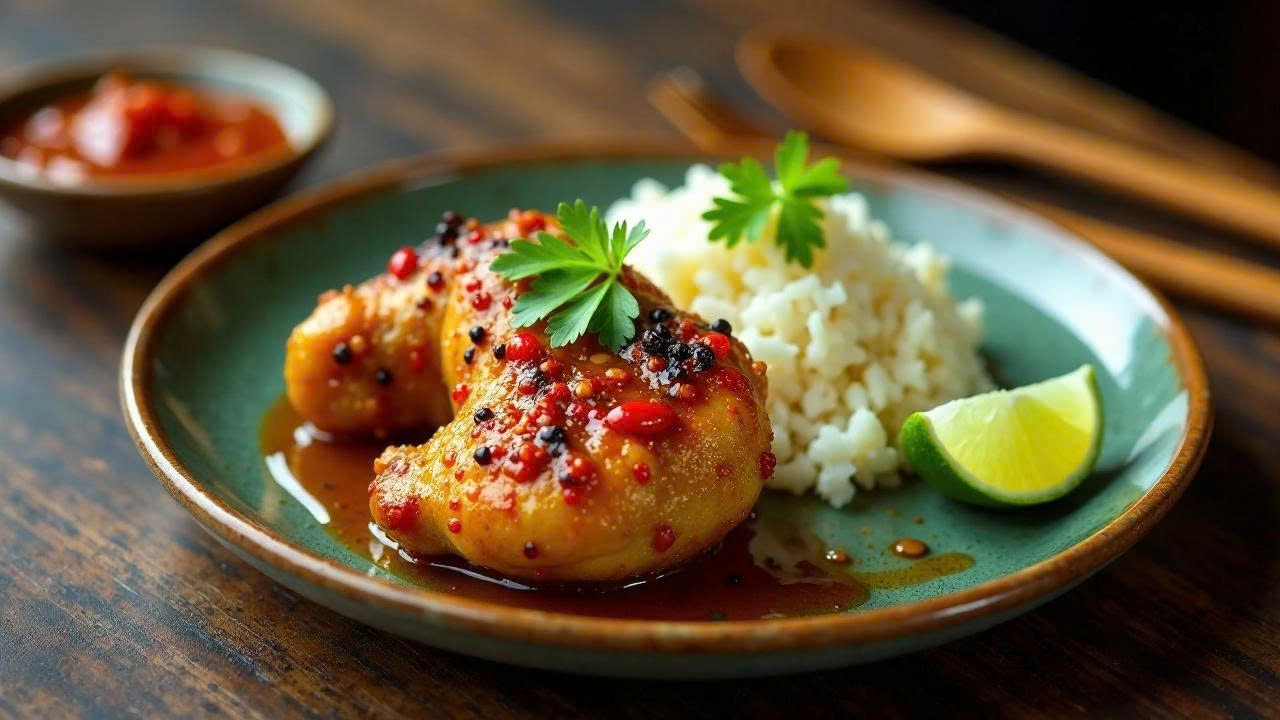
Balinese cuisine is a vibrant reflection of the island’s culture, shaped by its Hindu heritage, fertile volcanic soils, and abundant spices. Meals are a harmonious balance of flavors spicy, savory, sweet, and aromatic—brought together through fresh herbs, coconut, peanuts, and chili-based spice pastes known as bumbu. Rice is the centerpiece of most meals, complemented by grilled meats, seafood, and an array of vegetable dishes. Many recipes are deeply rooted in ceremonial traditions, often served during temple festivals and family gatherings, making Balinese food not only a culinary delight but also a cultural journey.

Nusa Penida is a stunning island off Bali’s southeast coast, famed for its rugged cliffs, crystal-clear waters, and dramatic landscapes. Highlights include Kelingking Beach with its dinosaur-shaped headland, Angel’s Billabong, and Broken Beach. Popular for snorkeling and diving, the island offers encounters with manta rays and vibrant coral reefs, making it a paradise for adventure and nature lovers.

Uluwatu is renowned for its dramatic sea cliffs, world-class surf breaks, and breathtaking ocean views. At its heart lies the iconic Uluwatu Temple, perched high above the waves and famous for sunset Kecak dance performances. With luxury resorts, hidden beaches, and a relaxed coastal vibe, Uluwatu is a perfect blend of culture, adventure, and natural beauty.
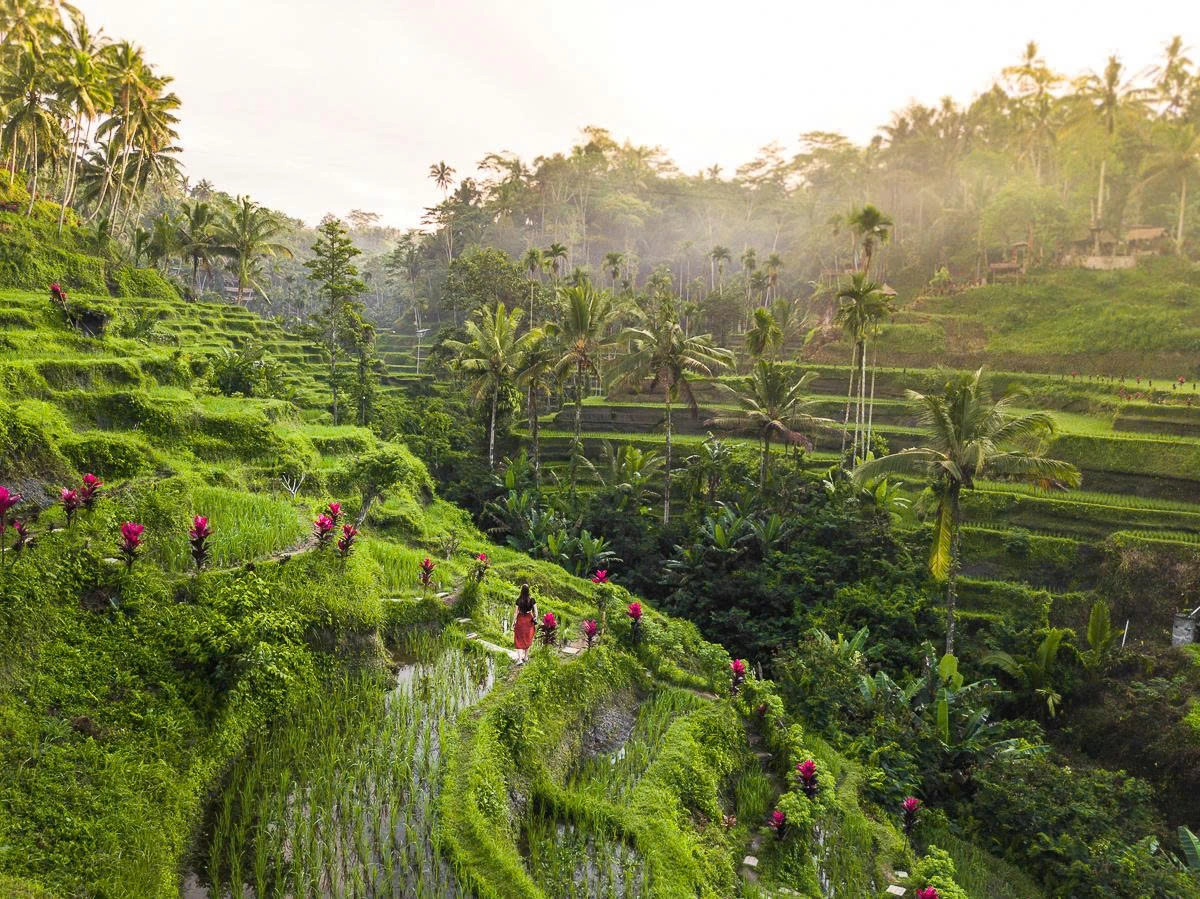
Ubud is the cultural and spiritual heart of Bali, surrounded by rice terraces, lush forests, and traditional villages. Known for its art, dance, and handicrafts, it’s also a hub for yoga, wellness, and spiritual retreats. With its temples, galleries, and serene landscapes, Ubud offers a deeper connection to Balinese heritage and nature.
Preparing for your upcoming trip to Asia?
Let us know what we can arrange for you!